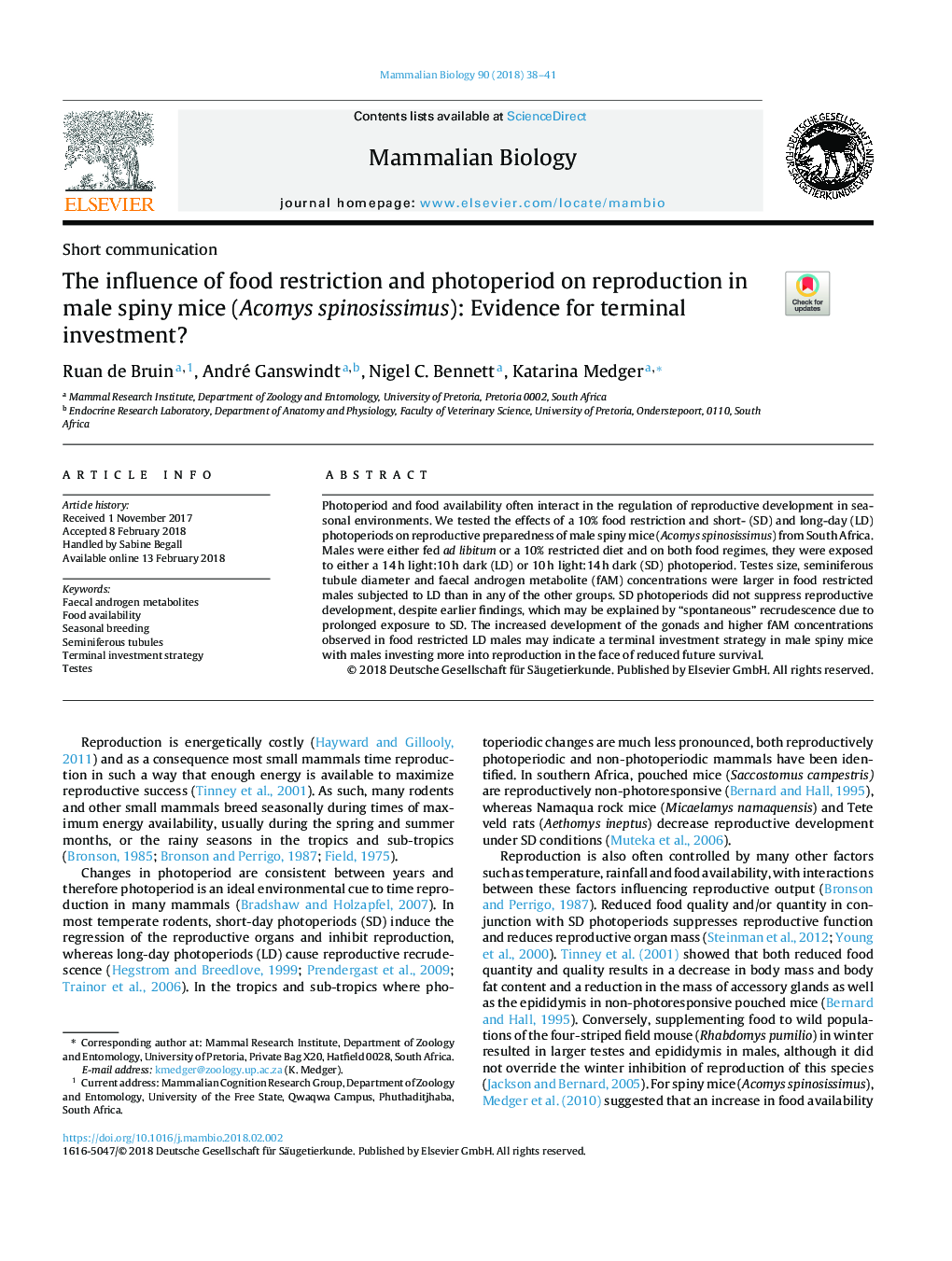| Article ID | Journal | Published Year | Pages | File Type |
|---|---|---|---|---|
| 8475654 | Mammalian Biology - Zeitschrift für Säugetierkunde | 2018 | 4 Pages |
Abstract
Photoperiod and food availability often interact in the regulation of reproductive development in seasonal environments. We tested the effects of a 10% food restriction and short- (SD) and long-day (LD) photoperiods on reproductive preparedness of male spiny mice (Acomys spinosissimus) from South Africa. Males were either fed ad libitum or a 10% restricted diet and on both food regimes, they were exposed to either a 14â¯h light:10â¯h dark (LD) or 10â¯h light:14â¯h dark (SD) photoperiod. Testes size, seminiferous tubule diameter and faecal androgen metabolite (fAM) concentrations were larger in food restricted males subjected to LD than in any of the other groups. SD photoperiods did not suppress reproductive development, despite earlier findings, which may be explained by “spontaneous” recrudescence due to prolonged exposure to SD. The increased development of the gonads and higher fAM concentrations observed in food restricted LD males may indicate a terminal investment strategy in male spiny mice with males investing more into reproduction in the face of reduced future survival.
Related Topics
Life Sciences
Agricultural and Biological Sciences
Animal Science and Zoology
Authors
Ruan de Bruin, André Ganswindt, Nigel C. Bennett, Katarina Medger,
